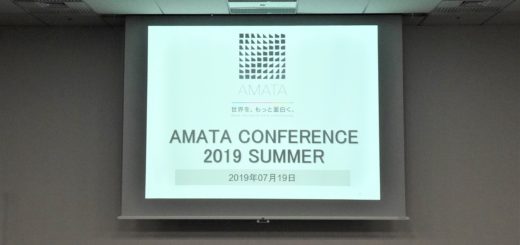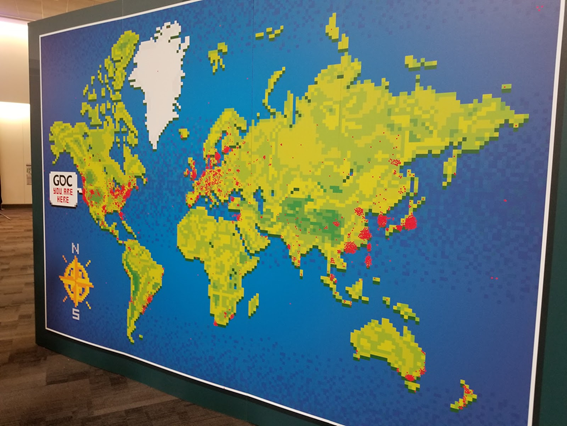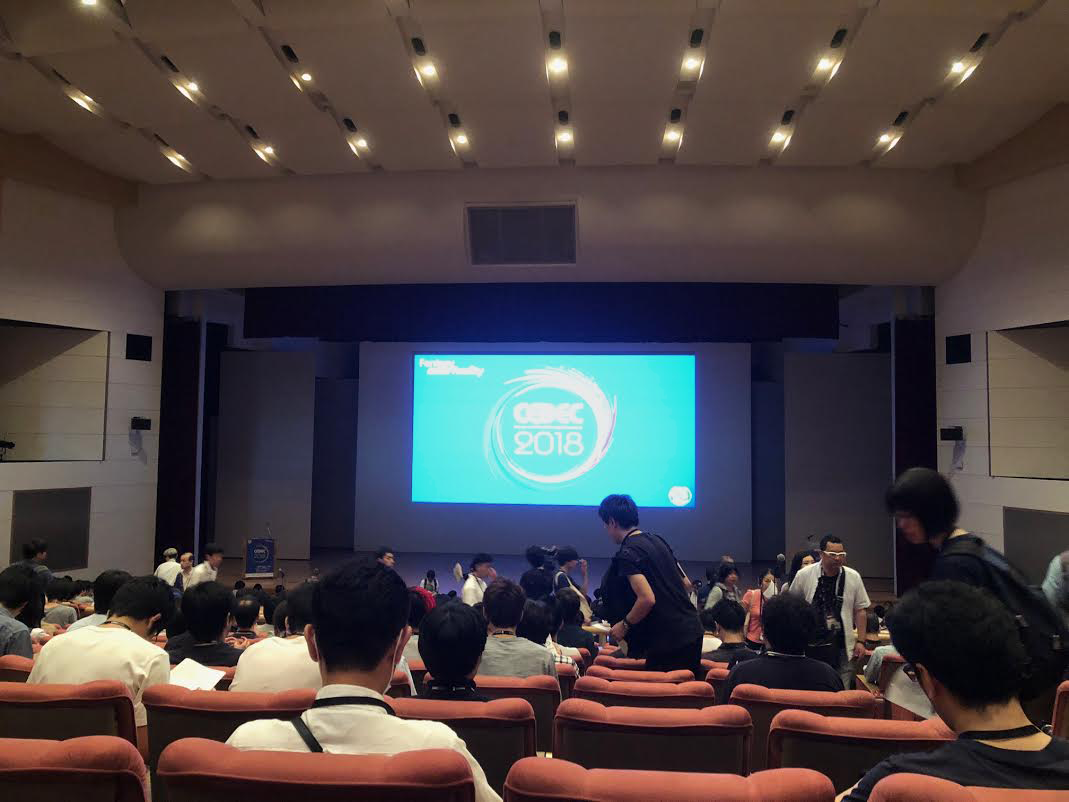China Joyレポート①
*English translation below
みなさまこんにちは。ビジネス開発部のMackeyです。
中国で開催された China Joy・JETRO(日本貿易振興機構)ブースに出展の為、上海に行ってきました。
当社としても、私個人としても、初めての China Joy 参加です。
Game Connection America の時と同様、当社のVRタイトル『Last Labyrinth(ラストラビリンス)』の出展をしました。
まずはこの『Last Labyrinth(ラストラビリンス)』と云うタイトルを、広く世界に知らしめる事が目的です。また、このタイトルの展示をフックに、中国のパブリッシャーから仕事を頂戴する事も期待しました。
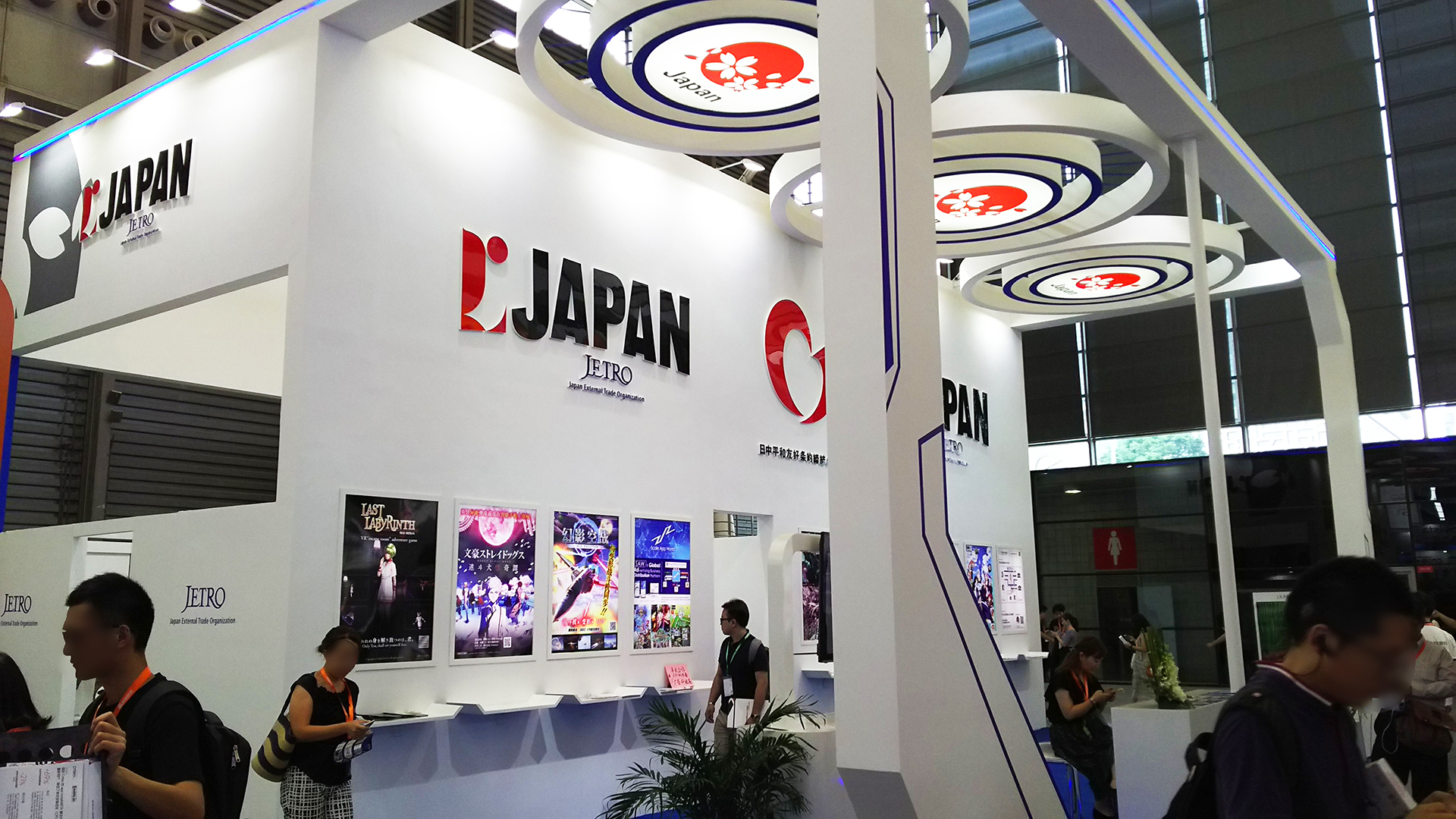
China Joy 会場はとても広く、巨大な三角形の形をしていて、その1辺は、TGS会場の幕張メッセより遥かに広大です。
三角形のうち、2辺がBtoCエリア、1編がBtoBエリアでした。
そのBtoBエリアの端っこにJETROのブースがあり、そこに、日本のゲーム関連の会社10社ほどが出展していました。
その一角に当社のブースがありました。
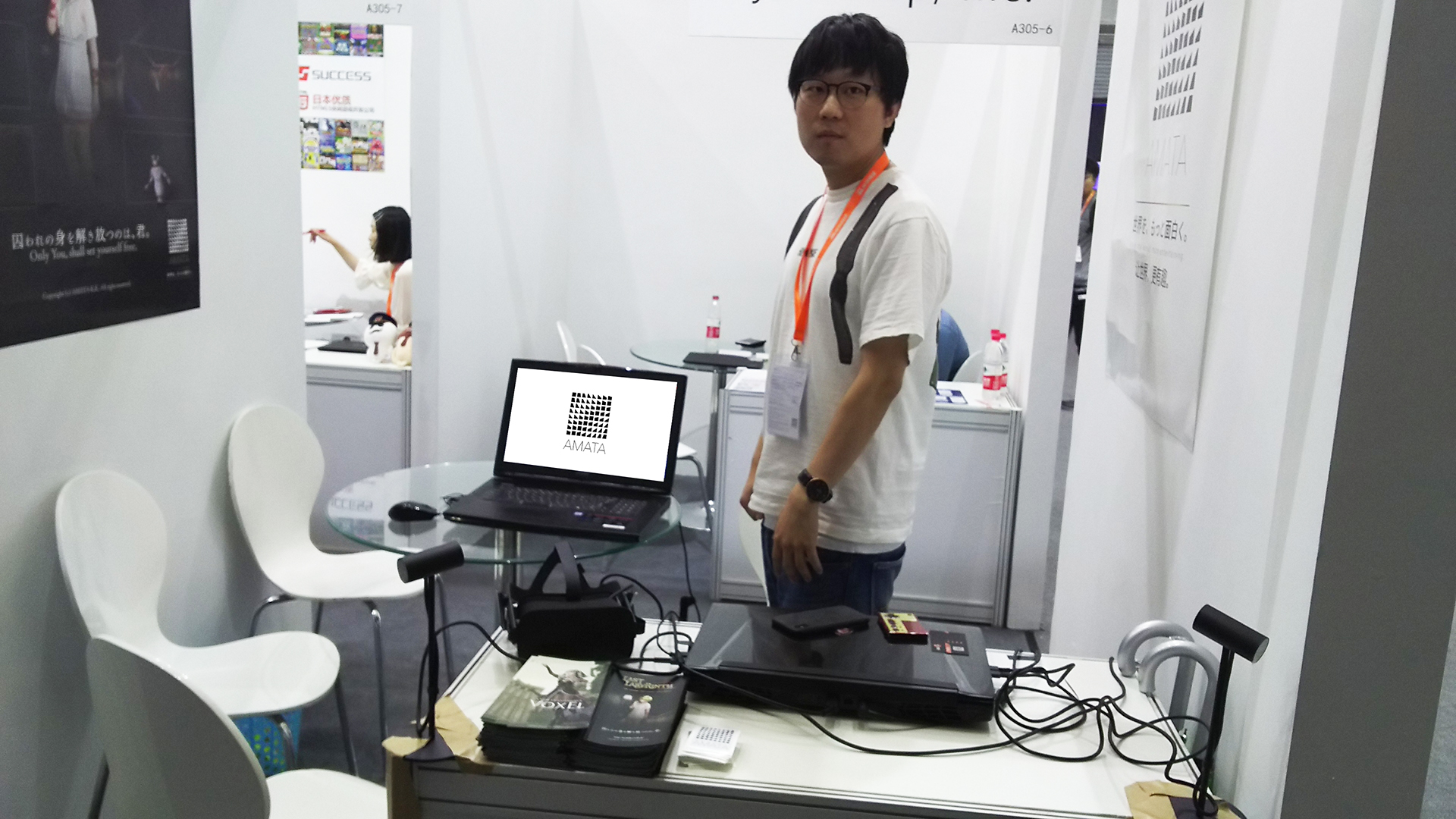
今回のChina Joy出展は、事前にはあまり商談のアポイントメントをとる事が出来ませんでした。それ故、会期中に一件も打合せできないかもしれないと不安に思っていました。
しかし、いざスタートしてみると、初日は、それこそ息つく暇もないほどに様々な会社が当社と話したいと詰め掛け、約40社とのミーティングを実施しました。
2日めは少し落ち着いて約30社、最終日は6社とミーティングを行いました。
その結果、仕事に繋がりそうな案件は、3日間で約10件でした。
当初の不安とは裏腹に、初めてのChina Joyとしては、まずまずの成果を出す事が出来ました。
2日目に、ものすごく広いBtoCエリアを一回りしました。
想像していたほどの混み具合では無かったのですが、それでも人気の企業、人気ゲームのブースの周りは移動もおぼつかないほど混んでいました。
やはり、BtoCと、BtoBと云う形で、目的と来場者を明確に切り分けていただけあり、BtoCエリアは来場者を楽しませる為のショーアップが徹底してなされていました。
特にLeague of Legendsを始めとするe-Sports的なゲーム大会、女性アイドル(有名か無名かは判りません)のダンス&歌のショーの人気が高かったです。
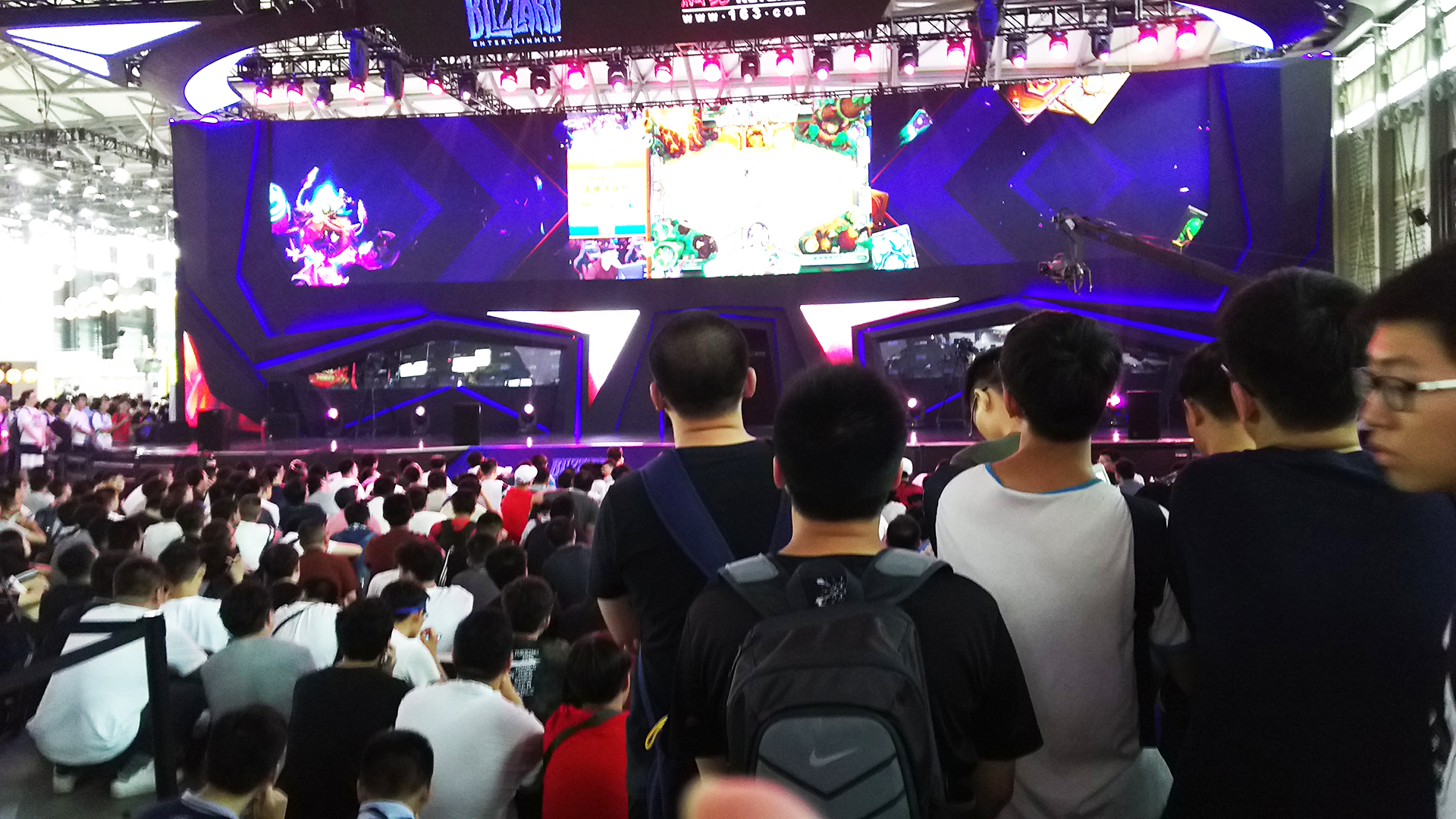
逆に、あまりショーアップされていないブースは、客付きは芳しくなかった様です。
TGSを始めとする日本のトレードショーでは、BtoCもBtoBも同じ場所で行われるため、お客様が同業者なのか、エンドユーザーなのか判らない処がありましたが、China Joy・BtoCエリアのお客様は、もちろん同業者も沢山いらっしゃるのだろうとは思いますが、基本「楽しむために来ている」「楽しませようとしている」と云う主催者側、来場者側の目的が明確になっているのは、判り易くて良いと思いました。
そしてBtoC、BtoBエリアと一通り回っての感想は、中国のゲーム開発者のレベルの向上を強く印象付けられたと云う処です。
これまで、中国のゲームと日本のゲームを比べた時に、プログラム技術では既に日本は中国に追い越されたものの、企画力やグラフィック、特にキャラクターのコンセプトメイクでは、かろうじて日本に一日の長が在ると思っていました。
しかし、それは大きな間違いだと気付かされました。
確かに、アニメーションやコミックス出自のIPの創造力には、まだまだ日本には強みが在るかも知れません。
しかしながら、いまや中国のグラフィック・デザイナーは、中国国内だけでなく、北米や、日本向けの嗜好に合わせたデザインが出来る、高いレベルと表現の幅の広さを獲得していると感じました。
いまや中国のパブリッシャーは、そしてデベロッパーは、その高い技術を背景に、北米に、欧州に、そして日本にと広がって行こうとしています。
日本のゲーム開発者たちは、パブリッシャーであれ、我々の様なデベロッパーであれ、さらなる進化を求めて行かねば生き残れないと云う事を強く印象付けられました。
(Mackey)
China Joy Report ①
Hello, everyone. I am Mackey from the Business Development Department.
We went to Shanghai to set up a booth at China Joy・JETRO(Japan External Trade Organization) held in China.
It was both the company’s and my first time participating in China Joy.
Just like the time at Game Connection America, we exhibited our company’s VR title Last Labyrinth.
Our aim is to make Last Labyrinth known to the world. So, using our booth to spark an interest in our title, we also hoped to attract the attention of Chinese publishers and receive new job requests.

The China Joy venue was very spacious, in the shape of a large triangle, and one side of it was much larger than Makuhari Messe, the usual venue for Tokyo Game Show (TGS).
Out of the triangle shape, two sides were the Business-to-Consumer marketing (B2C) areas, and one side was the Business-to-Business marketing (B2B) area.
The JETRO booth was at a corner of that B2B area, and there were about ten Japanese game-related companies with booths set up at that corner.
Our booth was in one of the corners.

For this China Joy exhibition, but we were largely unable to make appointments for business negotiations in advance. Because of that, we were worried that we would not be able to have even one meeting during our time there.
However, when the event actually started, on the first day, we were flooded with companies who wanted to talk to us to the extent that we did not even have the time to breathe, and we conducted meetings with about forty companies.
On the second day, things were a bit more calm and we had about meetings with about thirty companies, and with six companies on the last day.
As a result, there were about ten cases that were potential job leads in the three days.
Contrary to our worries from the beginning, we were able to produce quite adequate results for our first time at China Joy.
I went around the extremely spacious B2C area on the second day.
It was not as crowded as I had expected, but even then, it was so crowded around the booths of popular corporations and popular games that it was hard to get around.
As there was distinct separation of purpose and visitors by B2C and B2B, the B2C area had gone all out with its displays to entertain visitors.
Extremely popular in particular were the e-Sports game tournaments such as League of Legends, and the female idol performances (though I’m not sure if they actually are famous or not).

Conversely, it seemed like the booths that did not have flashy attractions did not attract many visitors.
At Japanese trade shows such as TGS, as B2C and B2B are both conducted in the same venue, there were times when it was unclear whether the visitors were in the industry or end users, but while there must also have been many in the industry at the China Joy・B2C area, I thought it was good that in general, it was clear that the organizers were focused on “making it fun” and the visitors were here to enjoy themselves.
My thoughts about going around the B2C and B2B area are that the improvement in standards of Chinese game developers left a deep impression on me.
Until now, when I compared Chinese and Japanese games, while Japan had overtaken China in terms of program technology, my opinion was that in terms of planning ability, graphics, and especially character creation concepts, Japan was only slightly superior.
However, I was forced to realize that that was a big mistake.
It is true that in terms of the creativity of IP, the birthplace of animation and comics, Japan is still very much in the lead.
However, I felt that currently, China’s concept artists have attained a high level and wide range of expressions that enable them to create designs not just in China, but for North American and Japanese tastes.
Currently, Chinese publishers and developers are using those advanced skills to expand into North America, Europe, and Japan.
It gave me a strong impression that Japanese game developers, no matter whether they are publishers or developers like us, have to pursue further progress if they want to survive the industry.
(Mackey)

